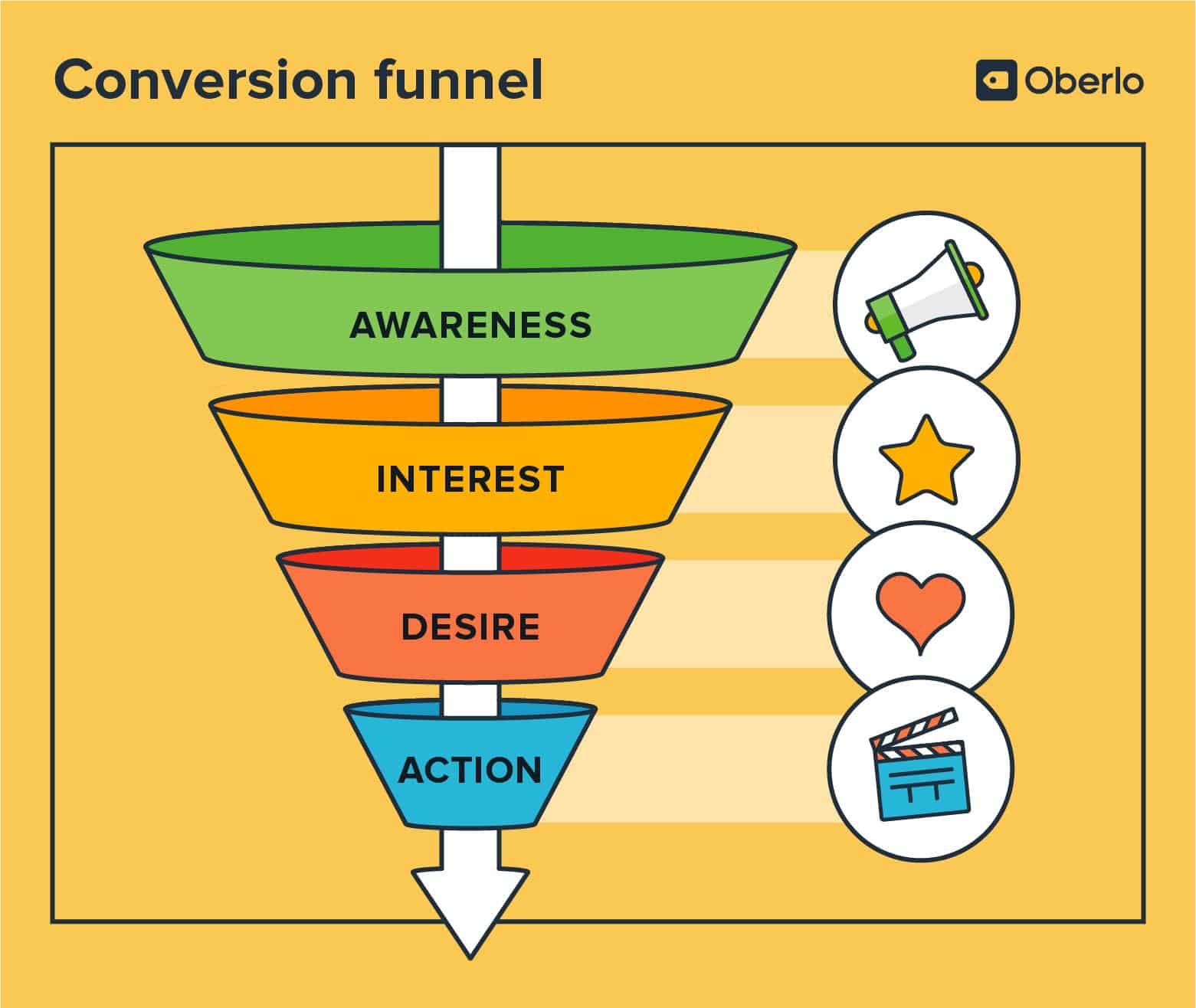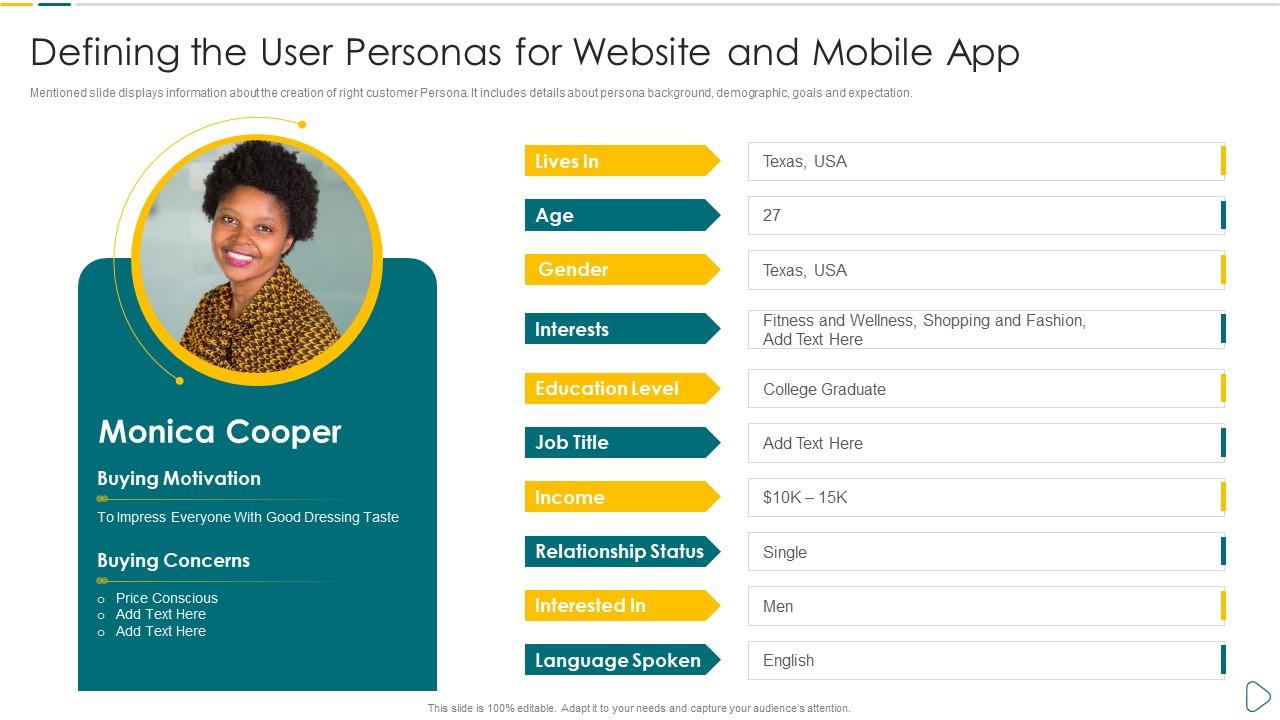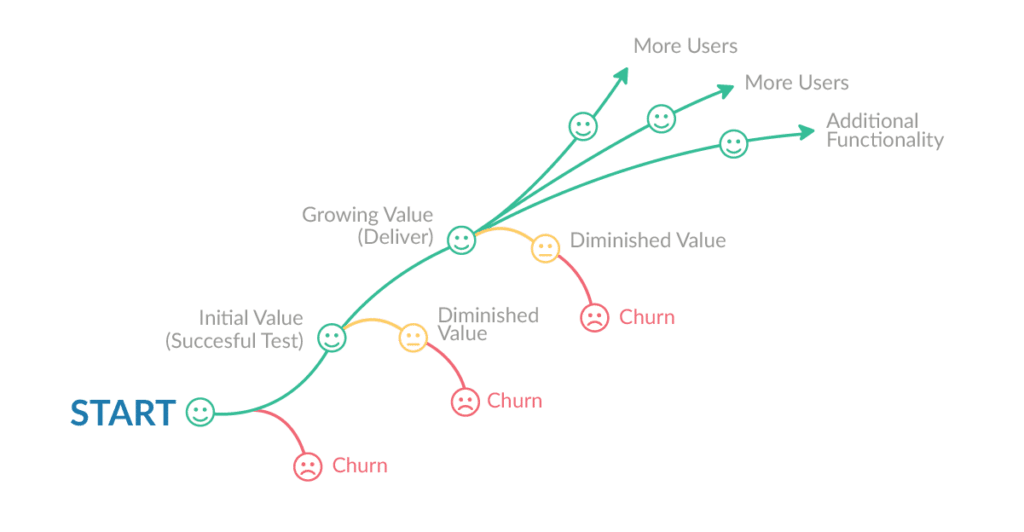Effective User Onboarding: Strategies for Successful User Adoption
User onboarding guides and familiarises new users with a product or service, ensuring seamless adoption and retention. It encompasses a series of interactions and experiences that introduce users to the offering’s features, functionality, and value proposition.
Today’s highly competitive digital landscape enables users to have many options available to them. If businesses are to survive, they must pay attention to the significance of a good user onboarding process. Done properly, it can lead to enhanced user engagement, reduced learning curve, and increased customer satisfaction.
At the end of this article, you’ll understand the ins and outs of top-notch user onboarding. We’ll also explore user onboarding software tools and best practices to optimise digital adoption platforms for successful adoption.
Table of Contents
- Benefits of a well-designed user onboarding process
- Understanding user behaviour and needs
- Strategies for creating a seamless onboarding experience
- #1. Set clear onboarding goals and objectives
- #2. Design intuitive user interfaces and navigation
- #3. Provide proactive guidance and interactive tutorials
- #4. Implement progressive disclosure to avoid overwhelming users
- #5. Personalise the onboarding process based on user preferences
- #6. Deploy a well-defined gamification strategy
- Optimising user onboarding for different user segments
- Measuring and iterating on onboarding success
- Conclusion
- Machine Learning In Finance: 12 Essential Applications
- How To Create Interactive Compliance Training For Bank Employees
- How Fintech Apps Are Using Gamification To Increase User Engagement
- Top Gamification Companies for Employee & Customer Engagement
Benefits of a well-designed user onboarding process
Delivering a flawless and captivating user experience is essential in the fiercely competitive digital world. A crucial element in achieving this is implementing a well-crafted user onboarding process. Here are four reasons why:
#1. Improved user retention and reduced churn
A structured onboarding process is central to driving user retention and brand loyalty. By guiding users through the initial steps and showcasing the benefits, onboarding ensures they are likelier to stick around. They’re also more likely to continue engaging with the product, reducing customer churn.
Unsurprisingly, over 95% of SaaS B2B companies invest in user onboarding.
#2. Enhanced user satisfaction and engagement
A well-designed user onboarding process lets users immediately grasp the product’s value proposition. This enhances their engagement, reinforcing their decision to choose the product. In turn, this can contribute significantly to overall user satisfaction.
Additionally, onboarding can incorporate interactive elements, using such tools as guided tutorials or interactive walkthroughs. These are great for actively interacting with and educating users, making the learning process more enjoyable. As a result, users feel more satisfied, engaged, and motivated to explore further, leading to a positive user experience.
#3. Higher conversion rates and increased revenue
An effective user onboarding process can significantly impact conversion rates and drive revenue growth. When users receive a well-structured introduction to a product, they are more likely to convert from trial users to paying customers.
By clearly demonstrating the product’s benefits and addressing any initial concerns, onboarding increases the chances of users moving down the conversion funnel.

Source: oberlo.com
Moreover, onboarding can leverage personalised messages and incentives, such as free trials or discounts, to motivate users to act.
#4. Positive brand perception and word-of-mouth marketing
User onboarding is not just about functionality and features; it also shapes the overall brand perception. A well-designed onboarding experience demonstrates a company’s commitment to user success and showcases its attention to detail.
When users feel supported and empowered from the start, they develop a positive perception of the brand. This positive brand perception leads to increased trust, loyalty, and advocacy. Users who have experienced a smooth onboarding process are likelier to recommend the product to others, driving valuable word-of-mouth marketing.
Understanding user behaviour and needs
Creating an effective onboarding process requires brands to understand user behaviour and needs. Well-conducted user research helps marketing teams create user personas and adequately map the user journey. This lets them tailor their onboarding experience to address specific user pain points and motivations. Let’s take a closer look.
Conducting user research to identify pain points and motivations
User research is a fundamental step in understanding user behaviour and needs. Companies can gather valuable insights by entering users’ shoes by conducting interviews, surveys, and usability tests.
In particular, user research allows you to uncover specific issues that users may encounter when adopting your product or service. It helps you understand their goals, expectations, and the context in which they will use your offering
Creating user personas to tailor the onboarding experience
User personas are fictional representations of your target users based on research and data. They help you visualise and empathise with your users, enabling you to tailor the user onboarding experience to their needs.
Developing user personas lets you also identify common characteristics, preferences, and behaviours influencing user product adoption. For example, if your product targets tech-savvy individuals and beginners, you can create separate user onboarding tools and paths to accommodate different levels of expertise.

Source: slideteam.net
You can drive improved customer satisfaction by aligning your user onboarding tools and process with the needs of specific user personas. This increases the chances of a successful customer lifecycle, reduces customer churn, and drives user adoption.
Mapping the user journey and identifying critical touchpoints
Understanding the user journey is crucial for designing a seamless onboarding experience. User journey mapping involves visualising the steps users take from their first interaction with your product to achieving their desired outcomes. It helps identify critical touchpoints where users may encounter difficulties or drop off.
By mapping the user journey, you can identify opportunities to provide support and valuable resources to optimise the user onboarding experience. For instance, if users frequently struggle with a particular feature, including an interactive demo in the user onboarding software is a big help.
Ultimately, mapping the individual user onboarding journey enables you to anticipate user needs and create a tailored onboarding experience.
Strategies for creating a seamless onboarding experience
Creating a seamless user onboarding flow requires careful consideration of the most important factors. Chief among them is clearly identifying your user onboarding goals and understanding what resources to employ to achieve them.
Remember, an effective user onboarding software and process sets the tone for the user journey. Investing time and effort in designing a seamless user onboarding platform, software, and experience can lead to higher user adoption.
Consider the following strategies when creating a one-of-a-kind user onboarding experience.
#1. Set clear onboarding goals and objectives
What do you want users to achieve during the onboarding phase? Before designing an onboarding process, defining clear goals and objectives is essential. Setting specific goals, such as learning key features and completing necessary setup tasks, helps you structure the onboarding experience effectively.

Source: roundtablelearning.com
Clear onboarding goals provide a sense of direction and purpose to the customer journey, ensuring users stay engaged and motivated.
#2. Design intuitive user interfaces and navigation
A vital aspect of a seamless onboarding experience is designing intuitive user interfaces (UI) and navigation. Use clear and concise language, logical placement of elements, and intuitive icons to guide users. Users should be able to navigate through the product effortlessly and understand how to interact with its features.
Creating a more intuitive interface and user-friendly interface reduces confusion and frustration. More importantly, it enables users to quickly grasp the product’s functionality and achieve their goals. Consider conducting usability tests to identify any pain points in the UI and refine the design accordingly.
#3. Provide proactive guidance and interactive tutorials
Instead of overwhelming users with a barrage of information, guide them step-by-step through the critical features and functionalities. Provide contextual tooltips, informative overlays, or guided tours to help users understand how to perform tasks effectively.
Interactive tutorials encouraging hands-on exploration allow users to learn by doing, increasing user engagement and knowledge retention. By proactively guiding users and offering interactive learning experiences, you empower them to become more proficient and engaged with the product.
#4. Implement progressive disclosure to avoid overwhelming users
Avoid overwhelming users during the onboarding process by implementing progressive disclosure. Rather than bombarding users with all the information upfront, gradually introduce new features and concepts as users progress.
Start with the essentials and gradually reveal more advanced features or additional layers of complexity as users become more comfortable. Progressive disclosure helps prevent information overload and allows users to digest information at a manageable pace.
#5. Personalise the onboarding process based on user preferences
Personalisation is a powerful strategy for creating a tailored onboarding experience. Understanding user preferences allows you to customise the onboarding process to align with their needs and goals. Incorporate user preferences such as language, industry, or prior experience into the onboarding flow.
For example, offer different paths for beginners and advanced users or provide customisation options to personalise the user interface for daily active users. Personalisation creates a sense of relevance and increases user engagement, as users feel the product caters to their requirements.
#6. Deploy a well-defined gamification strategy
Gamification can create a more seamless user onboarding experience by increasing engagement and providing clear goals and objectives.
When users encounter gamified elements during onboarding, such as challenges or progress bars, it sparks their interest and encourages active participation. By incorporating game-like interactions, users become more engaged with the onboarding process, making it more enjoyable and memorable.
For example, structuring the onboarding process as a game with levels or achievements can give users a sense of progression and direction. They understand what they need to accomplish and can track their advancement, leading to a more focused and structured onboarding experience.
Gamification also promotes learning and skill development during onboarding. By integrating educational content into the gamified elements, users can acquire knowledge and skills while engaging with the onboarding process. This approach transforms what might otherwise be a mundane task into an interactive and immersive learning experience.
Optimising user onboarding for different user segments
Optimising user onboarding is key to successful product adoption and long-term user satisfaction. A one-size-fits-all approach won’t cut it when it comes to welcoming new users, transitioning users from competitor products, or supporting advanced users. Each user segment has distinct needs, expectations, and levels of familiarity with your product.

Source: thegood.com
Understanding and catering to these differences are essential to creating a seamless and personalised onboarding experience. Below are some strategies to optimise the onboarding process for different user segments.
Addressing the needs of new users with no prior experience
New users without digital adoption platform access or previous experience with similar products need a seamless and intuitive signup process. Here are some factors to consider:
- Clear and concise guidance: Start with a brief introduction outlining the product’s value proposition and key features. Use simple language and visual aids to guide users through the initial steps, ensuring they understand the core functionality.
- Interactive tutorials: Incorporate interactive tutorials or guided tours to familiarise users with the product’s interface and essential functionalities. Break down complex processes into manageable steps, allowing users to practise and gain confidence.
- Progressive disclosure: Present information gradually, focusing on the most critical elements first. Gradually introduce advanced features as users become more comfortable with the basics. Overwhelming users with too much information at once may lead to confusion and disengagement.
Catering to users transitioning from competitor products
Users transitioning from competitor products already have some familiarity with similar offerings. To ensure a smooth transition and encourage adoption, consider the following:
- Highlight differentiators: Communicate your product’s unique aspects and advantages compared to competitors. Emphasise the specific features or functionalities that set your product apart, compelling users to switch.
- Seamless data import: Offer a seamless way to import data from competitor products. By enabling users to carry over their existing data, you reduce the friction associated with switching, making the transition more convenient.
- Personalised onboarding: Tailor the onboarding experience based on the user’s previous product usage. Provide optional tutorials or advanced features that align with their prior knowledge, allowing them to adapt quickly to your product’s ecosystem.
Supporting advanced users with additional features and resources
For users who are already familiar with the product or have advanced technical knowledge, it is crucial to provide help and features that cater to their needs, such as:
- The advanced feature showcases: Highlight and showcase advanced features through in-depth tutorials, videos, or webinars. Provide users with the knowledge and tools to leverage the product’s full potential.
- Dedicated support channels: Offer advanced users access to dedicated support channels, such as priority email or chat support. This ensures timely assistance and demonstrates your commitment to their success.
- Community engagement: Foster community by creating user forums or online groups where advanced users can connect, share insights, and collaborate. Encouraging active participation in the community helps users learn from each other and discover new possibilities.
Measuring and iterating on onboarding success
This is a crucial aspect of creating a successful user onboarding process. It involves evaluating the effectiveness of the onboarding experience through various metrics and using the insights gained to make iterative improvements. This iterative approach helps optimise the onboarding process and enhances user adoption and satisfaction.
Identifying key metrics to evaluate user onboarding performance
It’s important to identify the right metrics that align with your product’s goals and the goal of user onboarding and expectations. Here are a few key metrics to consider:
- User activation rates: This metric measures how many users complete the initial steps of the onboarding process. This is a good indication of their engagement and readiness to explore your product further. Tracking activation rates also help you understand the effectiveness of your onboarding flow in motivating users to take action.
- Time to first value: This metric reflects how users experience your product’s core value or benefit. A shorter time to the first value indicates a smoother onboarding experience and increases the likelihood of user retention.
- Drop-off points: Identifying the stages or features where users commonly drop off during onboarding provides valuable insights. Analysing these points helps you identify potential bottlenecks or areas of confusion that may hinder user progress.
Tracking user activation rates, time to first value, and drop-off points
Even with the best user onboarding software, you still need quantitative and qualitative data to optimise the process. Consistently tracking and analysing the data to gain actionable insights is important. Here’s how:
- User analytics: Utilise user analytics tools to track user behaviour during the onboarding process. By monitoring user interactions, you can identify specific actions that lead to successful onboarding. It also lets you determine where users may encounter difficulties or abandon the process.
- Funnel analysis: Visualise the onboarding process as a funnel and analyse the conversion rates at each step. This allows you to pinpoint the stages with the highest drop-off rates, indicating potential areas for improvement.
Analysing user feedback and conducting usability tests
User feedback and usability testing provide invaluable qualitative insights into the onboarding experience. To leverage them effectively, consider:
- User surveys and feedback: Collect feedback from users who have completed the onboarding process or those who dropped off. By understanding their pain points and challenges, you can identify areas of improvement and tailor the onboarding experience to meet their needs.
- Usability testing: Conduct usability tests with representative users to observe their interactions and identify any usability issues. This approach helps uncover obstacles or confusion that may impede the onboarding process.
Using data-driven insights to iterate and optimise the onboarding process
- Iterate onboarding flows: Use the insights gained from user analytics, funnel analysis, feedback, and usability tests to refine and streamline the onboarding flow. Simplify complex steps, clarify instructions, and remove unnecessary friction to create a smoother user experience.
- A/B testing: Implement A/B testing to experiment with different onboarding variations and measure their impact on key metrics. This iterative approach allows you to continuously optimise the onboarding process based on data-driven insights.
Download your free
“Gamification Guide”
Get your PDF now and start transforming your approach to digital engagement!
Conclusion
Effective user onboarding is critical in driving successful user adoption in the digital landscape. By prioritising and improving the user onboarding process, companies can enhance user satisfaction, drive engagement, and increase conversion rates for existing customers.
In this era, effective user onboarding has evolved from a mere choice to an absolute must. It’s time to seize the reins and revolutionise your best user onboarding approach to craft a user onboarding experience that drives results. Step into the boundless possibilities of our digital realm.
Latest Posts
Machine Learning In Finance: 12 Essential Applications
The impact of machine learning on finance is significant. Thanks to this technology, financial institutions are now equipped to make efficient decisions. Through the analysis of data sets, machine learning […]
How To Create Interactive Compliance Training For Bank Employees
Banking compliance training isn’t just another task. It’s the stage where everything else performs. Banks must navigate a myriad of regulations and laws. After all, this is a trust-driven, high-stakes […]
How Fintech Apps Are Using Gamification To Increase User Engagement
Discover how gamification in fintech is revolutionizing financial engagement, making banking fun & boosting user loyalty.





